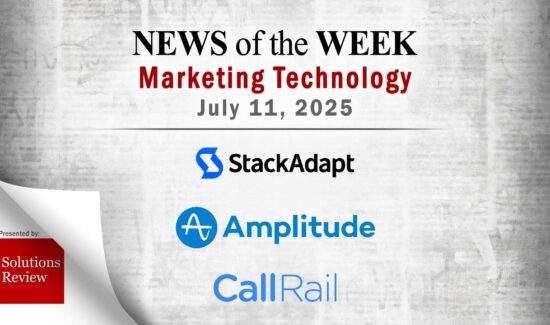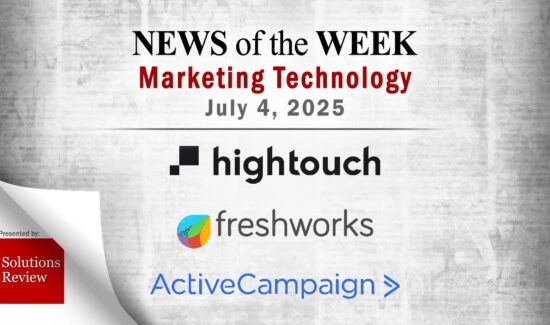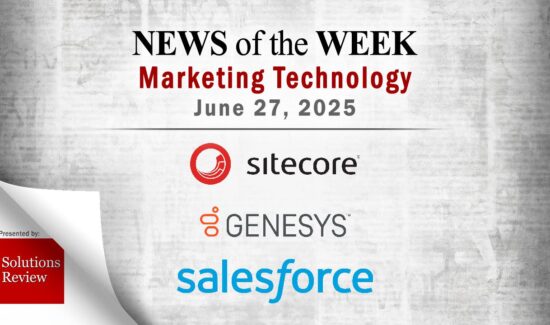What’s Changed: 2023 Gartner Magic Quadrant for Sales Force Automation Platforms


The editors at Solutions Review highlight and summarize the key takeaways and updates in Gartner’s 2023 iteration of their Magic Quadrant for Sales Force Automation Platforms.
Analyst house Gartner, Inc. recently released the 2023 version of its Magic Quadrant for Sales Force Automation Platforms. Gartner defines Sales Force Automation (SFA) Platforms as “tools that natively support (not via third-party add-ons and solutions) automation and capture of sales activities, processes, and administrative responsibilities for organizations’ sales professionals.” These platforms are an essential part of a company’s sales technology stack, as they can automate and augment a company’s foundational sales processes and improve sales reps’ ability to engage with customers.
The standard capabilities of an SFA solution include tools for sales activity management, collaboration, data visualization, partner relationship management, guided selling, analytics, mobile access, pipeline management, proposal development, forecast management, and account, contact, and opportunity management. Optional capabilities include digital sales roles, CPQ applications, revenue intelligence, engagement, and enablement.
What’s Changed: 2023 Gartner Magic Quadrant for Sales Force Automation Platforms
In this updated Magic Quadrant, Gartner identifies thirteen of the most significant Sales Force Automation providers in the marketplace. The researchers behind the report—Adnan Zijadic, Ilona Hansen, Steve Rietberg, Varun Agarwal, and Guy Wood—evaluated the strengths and weaknesses of each provider listed and ranked them on the signature “Magic Quadrant” graph, which provides readers with an illustration of each vendor’s ability to execute their vision. The diagram includes four quadrants: leaders, challengers, niche players, and visionaries. A breakdown of each category and the companies associated with it is below.
Leaders
Salesforce maintains its position as the top-ranked Leader in Gartner’s report. Its SFA offering, Salesforce Sales Cloud, is often used in B2B, B2C, and indirect channel sales cases. Recent additions to the Sales Cloud portfolio include a revenue insights dashboard for sales customers, customizable forecast pages, and the ability to differentiate between new and recurring renewals. Gartner spotlights its strengths in the SFA market as being its product portfolio, extensive third-party marketplace, partner relationship management (PRM) capabilities, customer community, and collection of customer success content.
Microsoft also retains its placement in the report with its Dynamic 365 sales solution. It is primarily used in B2B and B2C sales in the financial services, retail, consumer packaged goods (CPG), manufacturing, and professional services industries. Microsoft differentiates itself with its push into generative AI, continued investment in its AI capabilities, customer-centric product strategy, and sales productivity features, which include conversation intelligence, sales sequence reports, and activity management functionalities powered by Viva Sales (soon to be rebranded as to be rebranded as Sales Copilot).
Oracle closes out the category with Oracle Sales, a solution offered as part of the Fusion Cloud Application Suite. Oracle Sales is best suited for midsize to large enterprises across industries. Notable additions to the platform include guided selling cadences that support event-based sales process triggers, automated proposal generation, AI-augmented similar-account analysis, contact recommendations, and NLP analysis of meeting notes. Its strengths as an SFA vendor include its market responsiveness, innovative sales engagement features, and its capabilities on mobile and other devices.
Challengers
Creatio is the first Challenger in this year’s report. Its solution, Sales Creatio, is used across B2B, B2C, and partner channel sales in the financial, manufacturing, and professional services industries. The platform has recently expanded its functionalities with its Freedom UI Designer and a ChatGPT integration for AI-led workflow automation. Creatio’s strengths as an SFP vendor include its customer community, a vertical-specific application portfolio that supports up to twenty industries, and its guided selling capabilities.
Pega earns its place in the report with the Pega Sales Automation solution, which is well-suited for larger global enterprises in the insurance, healthcare, and financial services verticals. Recent additions to its suite include relationship mapping features, an improved mobile experience, and sales cadences for guided selling. Pega’s other strengths include its product strategy, range of deployment options, vertical-specific product offerings, and lead management capabilities, which use machine learning to apply real-time lead scoring to event-driven activities.
SugarCRM’s SFA solution, Sugar Sell, targets companies in the B2B upper-midmarket, although it does work with B2C and enterprises. It supports all industries but only offers industry-specific templates for professional, high-tech, manufacturing, and financial services. In the past year, SugarCRM has released an updated user interface and deeper pipeline inspection features. The company’s differentiating features as an SFP provider are its sales strategies for various industries, implementation services, and extensive customer success programs.
Niche Players
HubSpot is once again a Niche Player in this year’s report. Its SFA solution, HubSpot Sales Hub, supports small and midsize deployments for high-tech, professional services, and manufacturing companies in North America and Europe. The Sales Hub solution received several updates last year, including data model improvements, UI enhancements, a visual mapping tool, and improved custom object creation. Its strengths include the scope of its native capabilities, the out-of-the-box integrations, and its General Data Protection Regulation (GDPR) settings, which help sales teams manage consent.
BUSINESSNEXT, formerly CRMNEXT, relaunched itself in November 2022 as a broader enterprise solution suite provider focusing on financial services and insurance companies worldwide. Its SFA solution offers marketing and service technologies like video data analytics, out-of-the-box industry models for AI/ML, and bot support for multi-channel communications. Gartner spotlights its platform flexibility, deployment options, real-time engagement metrics, and account/contact health-scoring features as BUSINESSNEXT’s notable offerings.
Freshworks’ SFA offering, Freshsales, targets small and midsize enterprises in multiple verticals, emphasizing professional services and high-tech software. Freshsales is a SaaS-only solution hosted on the Amazon Web Services (AWS) infrastructure. It’s also available with marketing automation capabilities as part of the Freshsales suite. Its differentiating qualities as a SFA vendor include its lower Total Cost of Ownership (TCO), streamlined buyer collaboration, customer success resources, and integrations with tools like WhatsApp, Apple Messages for Business, Meta Messenger, and others.
Neocrm’s customer base might be predominantly located in China, but it has started expanding its deployments outside the region. The company primarily works with sales organizations of all sizes, focusing on clients in the manufacturing, professional services, technology, and CPG industries. It earns high marks for its mobile support, visualization, analytics, digitization, remote sales interactions, native conversation intelligence, and collaboration capabilities.
Vtiger is the final Niche Player in this year’s Magic Quadrant. Its SFA solution, Vtiger One, is ideally suited for the SMB market, specifically in B2B and B2C use cases across the financial services, pharmaceutical insurance, construction, and real estate industries. One of Vtiger’s most compelling features is the self-signup, always-free edition of its platform. It can help small businesses start their CRM journey with a pathway to the fee-based Professional and Enterprise editions. Other strengths include its buyer engagement tools and broader functionalities, including activity management, multiple buyer communication channels, opportunity management, interaction data tracking, and more.
Visionaries
Zoho kicks off the category with its CRM solution, which is well-suited for the needs of SMB and midsize organizations across technology, professional financial, real estate, and retail service industries. One of the notable updates Zoho has made to its platform focuses on Zia, its AI assistant, as it can now provide better recommendations, customer journey tracking, and churn predictions. Additional strengths of the Zoho CRM platform are its community of users, its product portfolio that includes over 50 solutions, and its market responsiveness.
SAP closes out this year’s Magic Quadrant report with SAP Sales Cloud, an API-first, microservices-based solution with built-in AI functionalities. Commonly deployed by larger B2C and B2B organizations, this solution is a proven fit for the wholesale, high-tech, manufacturing, professional services, and CPG industries. SAP earns its spot on the list with features like a pre-built Microsoft Teams integration, omnichannel sales engagement, real-time deal coaching, AI technologies, and other tools capable of supporting organizations with multiple products, sales teams, and sales processes.





















